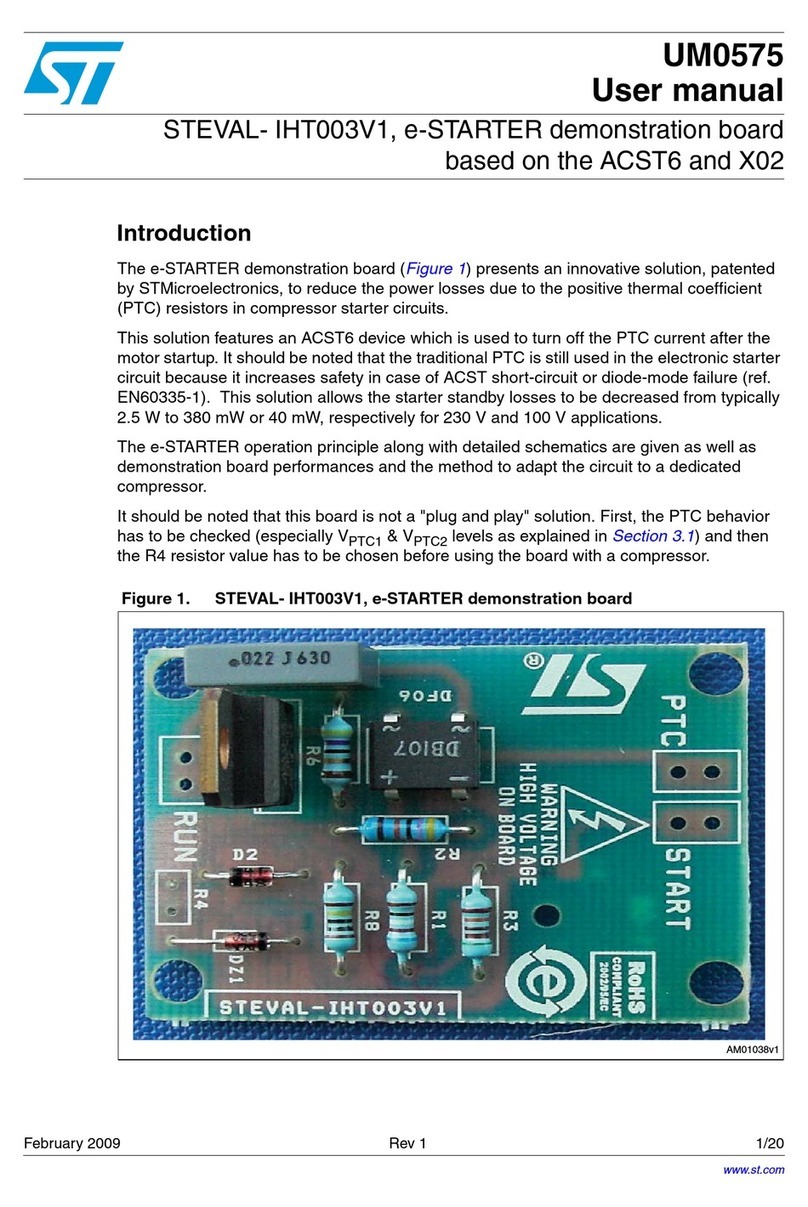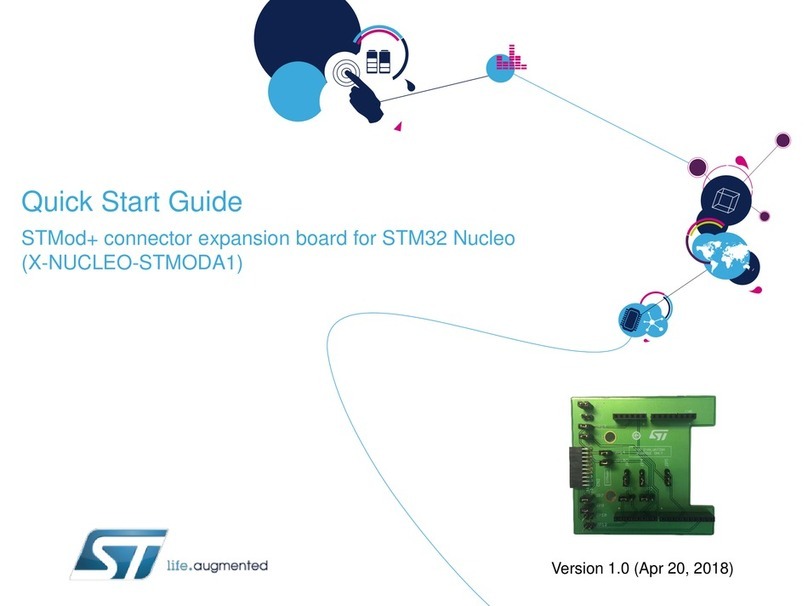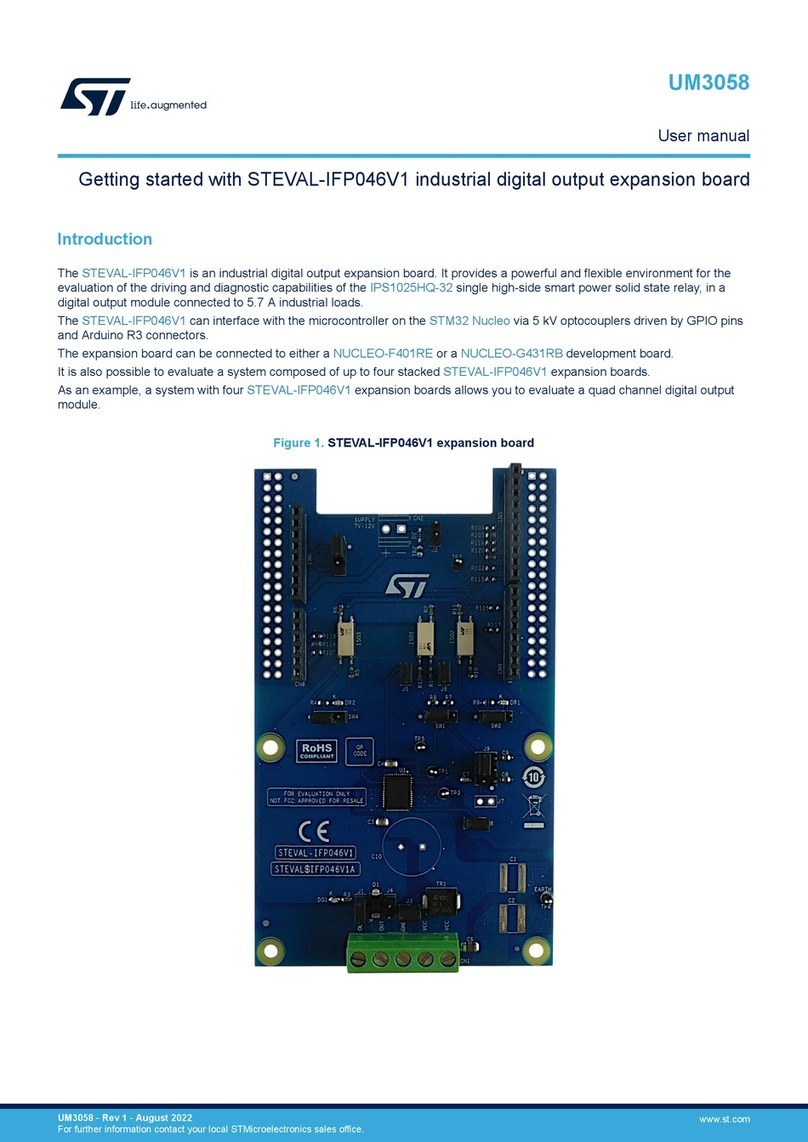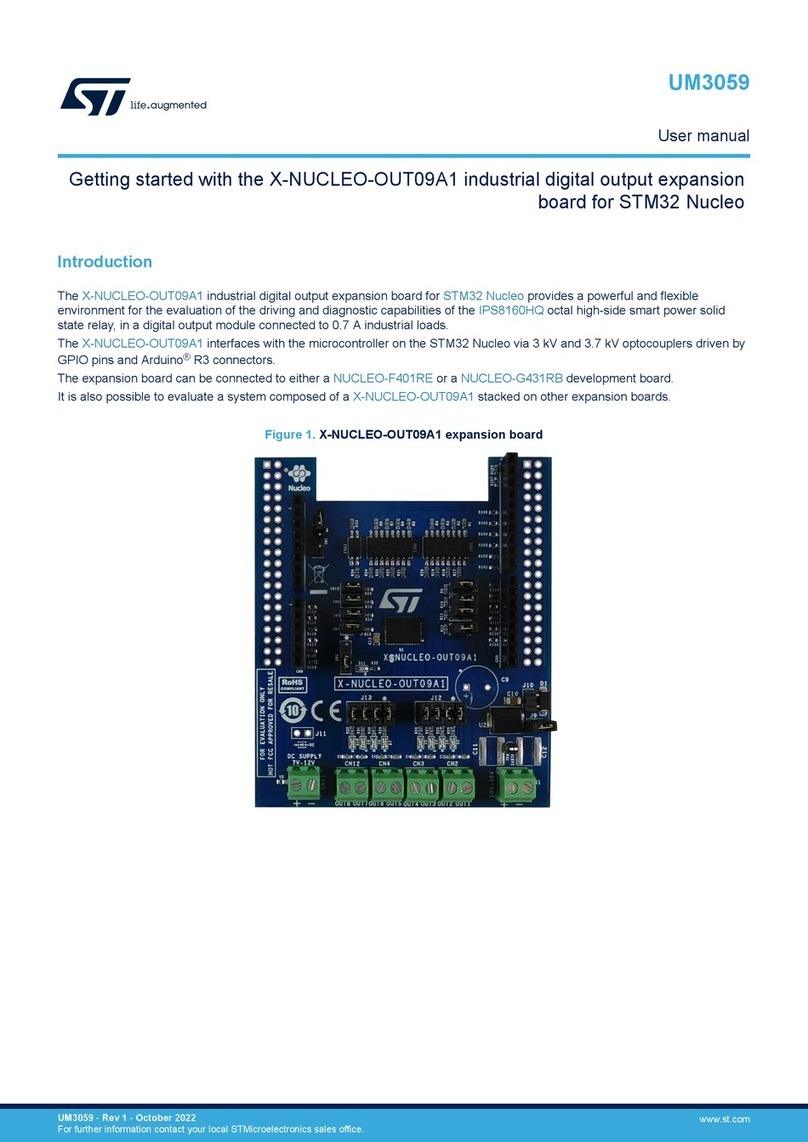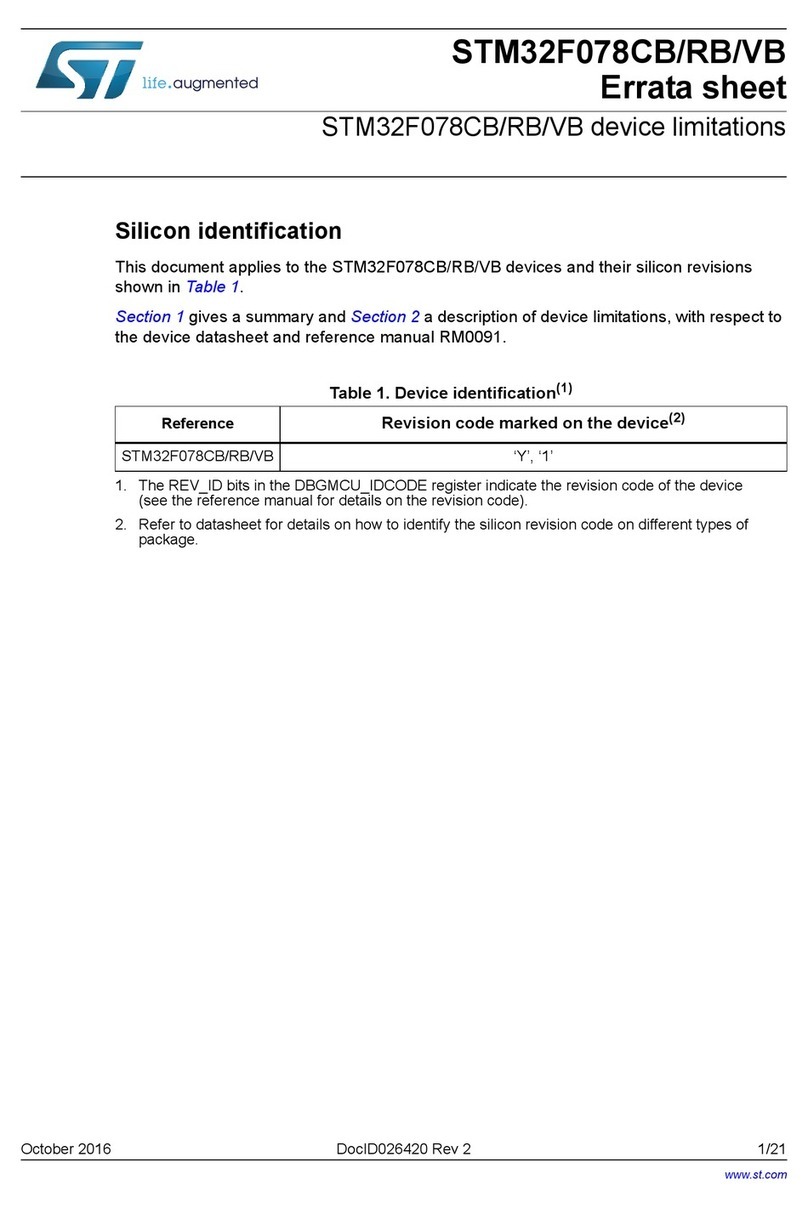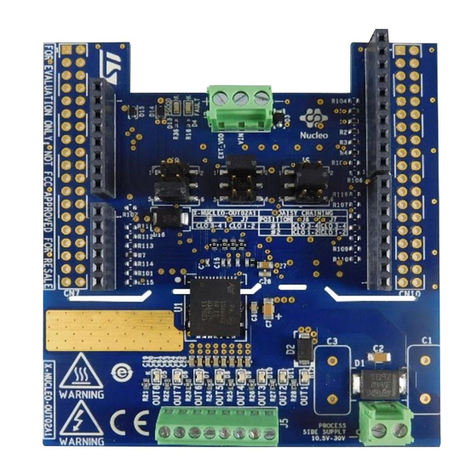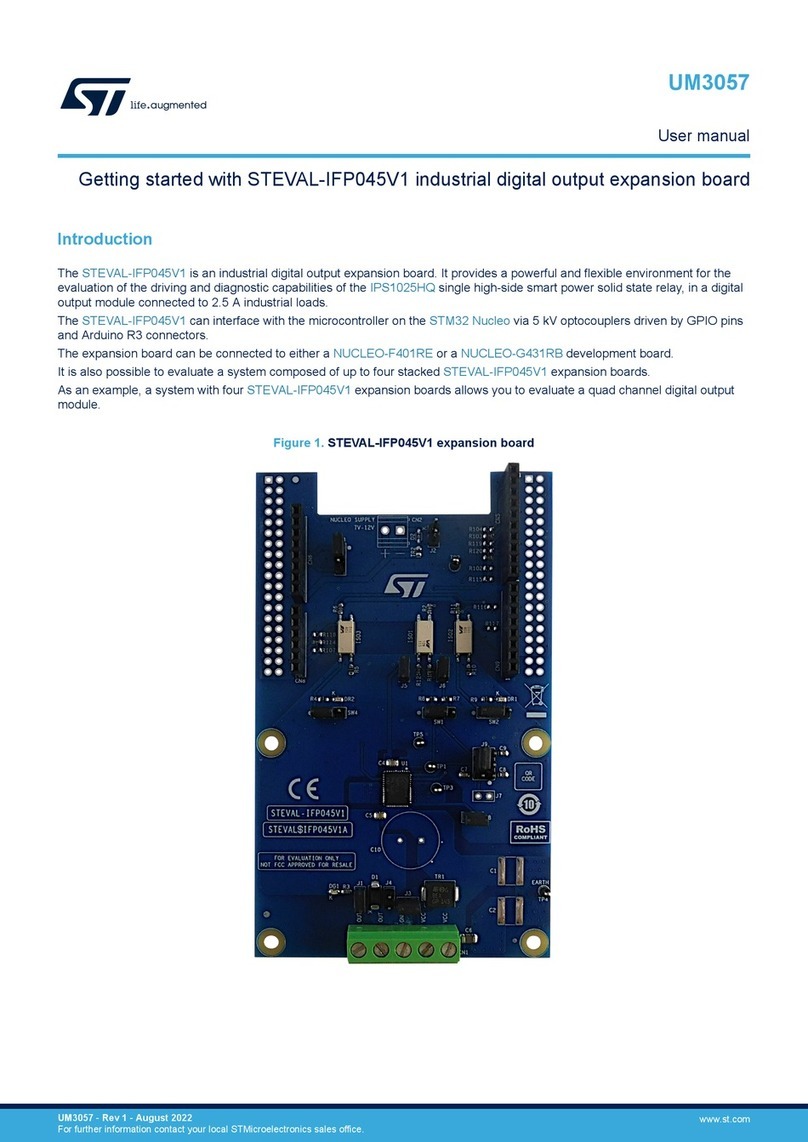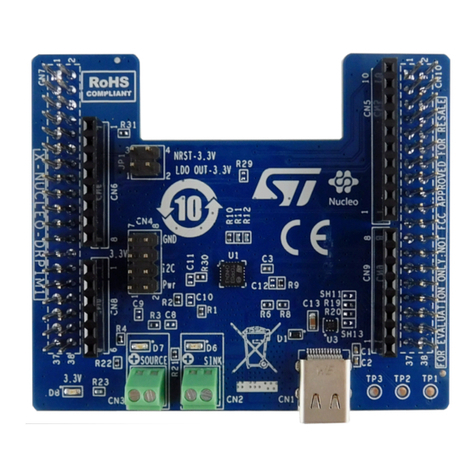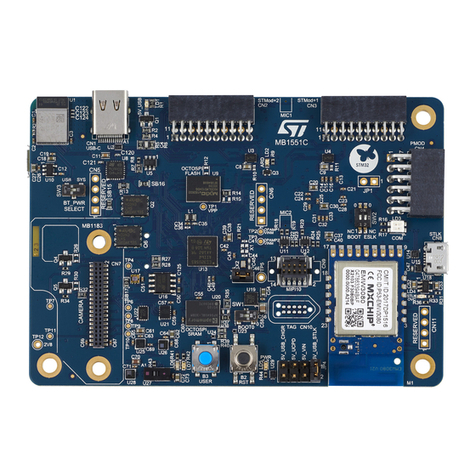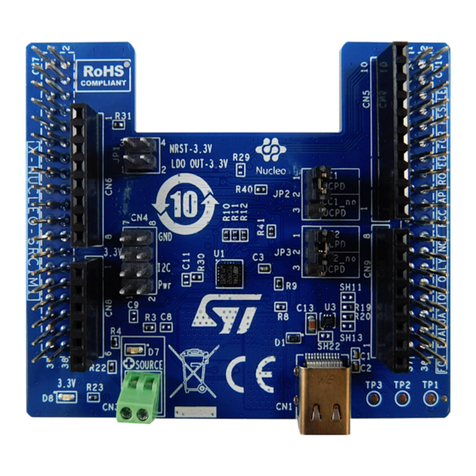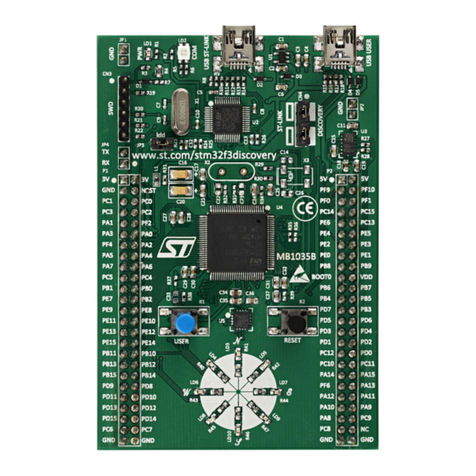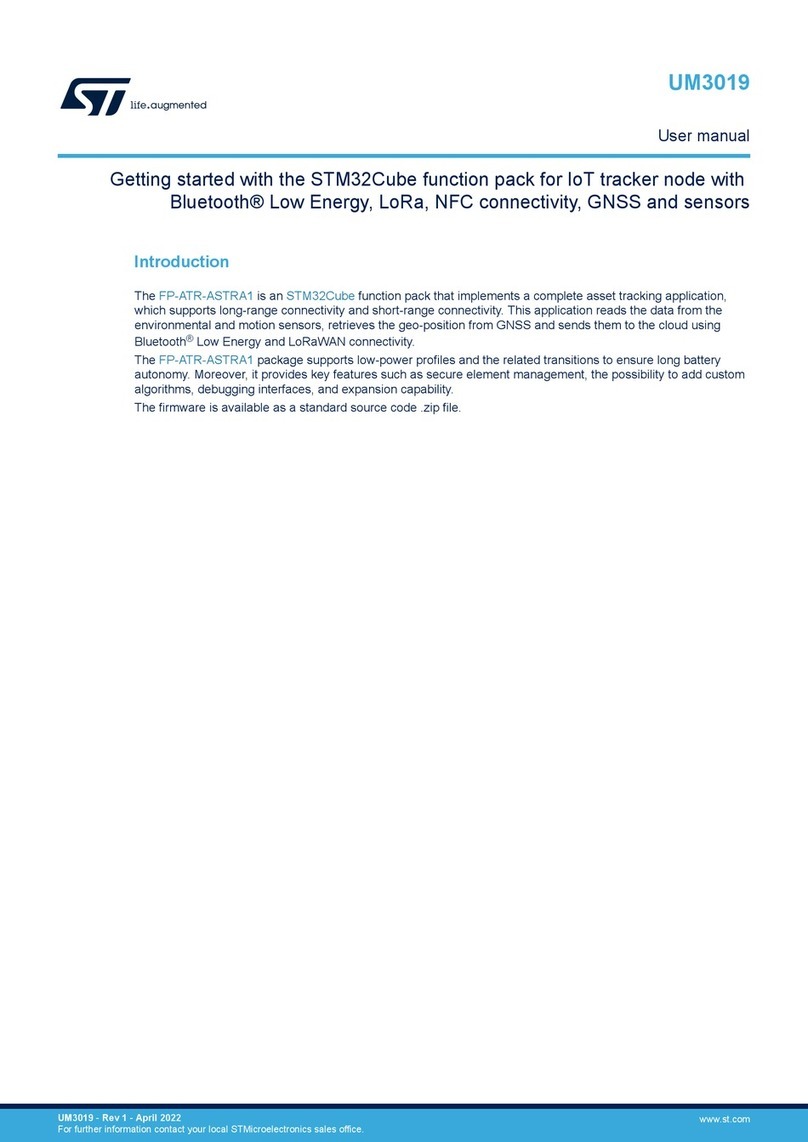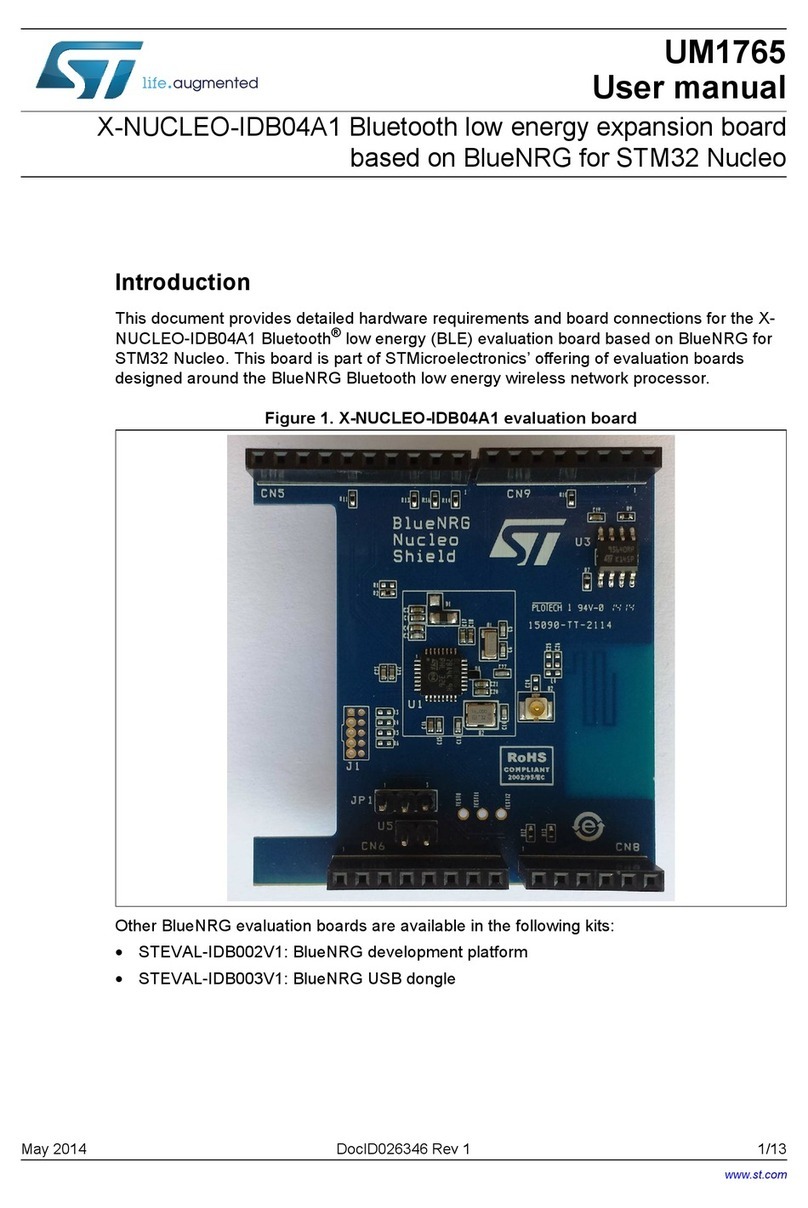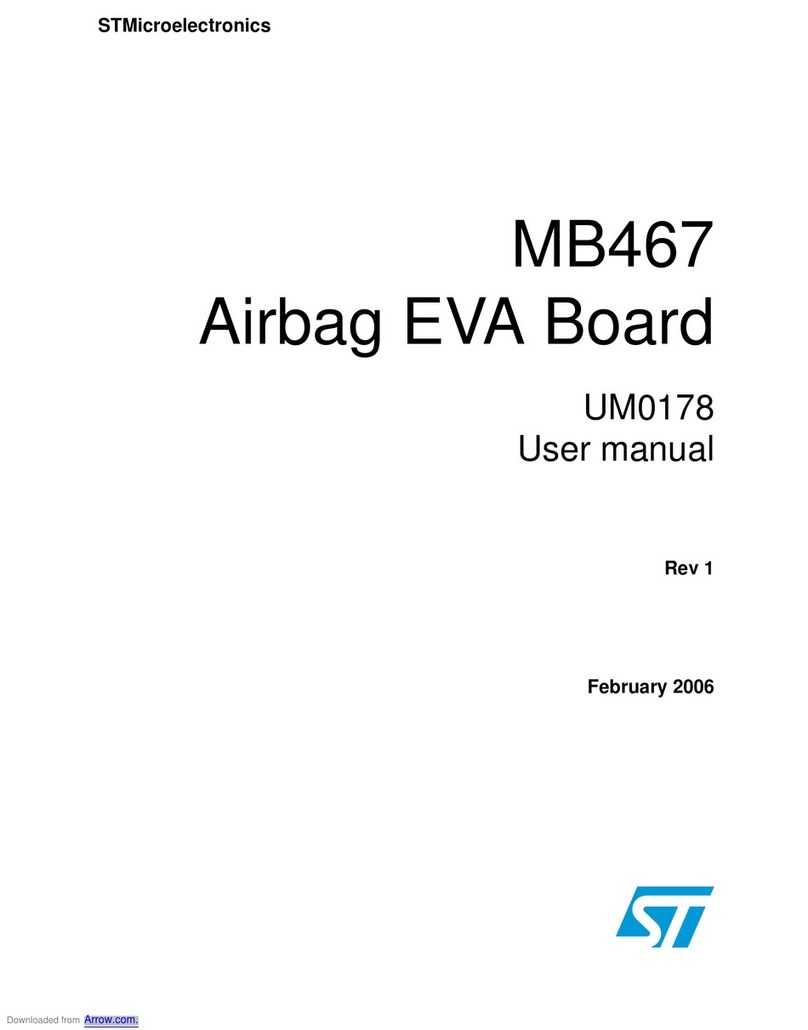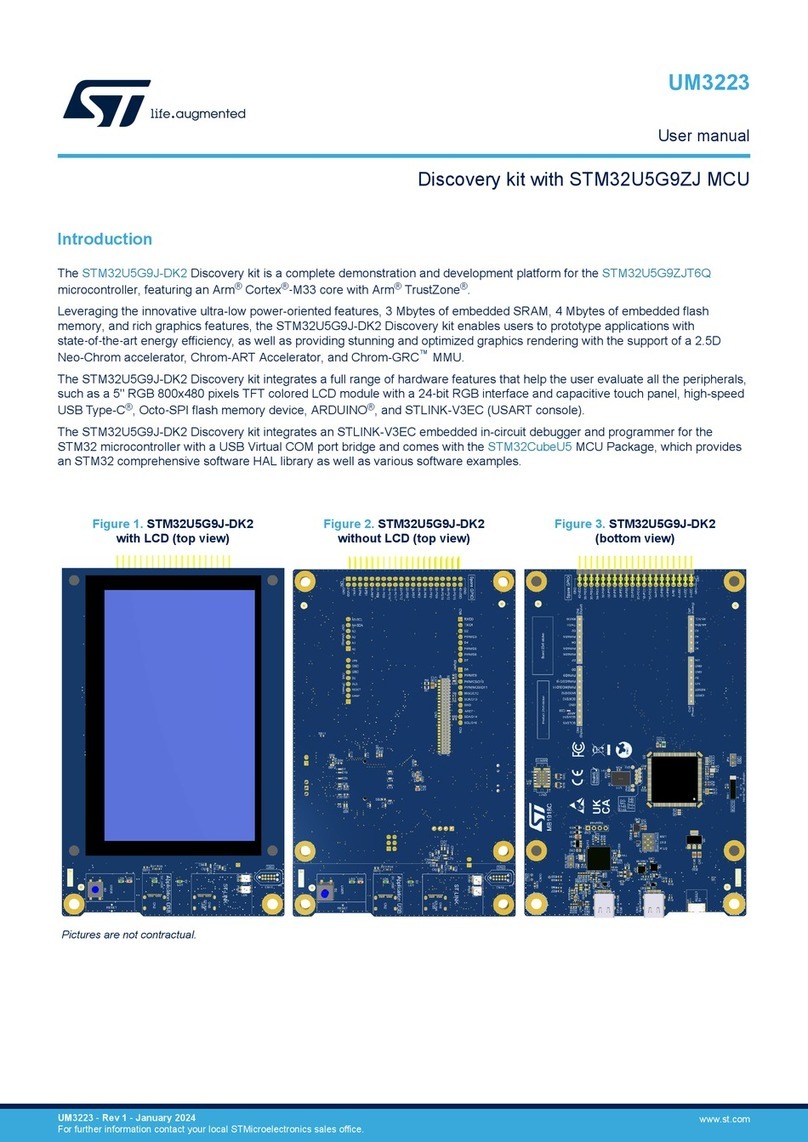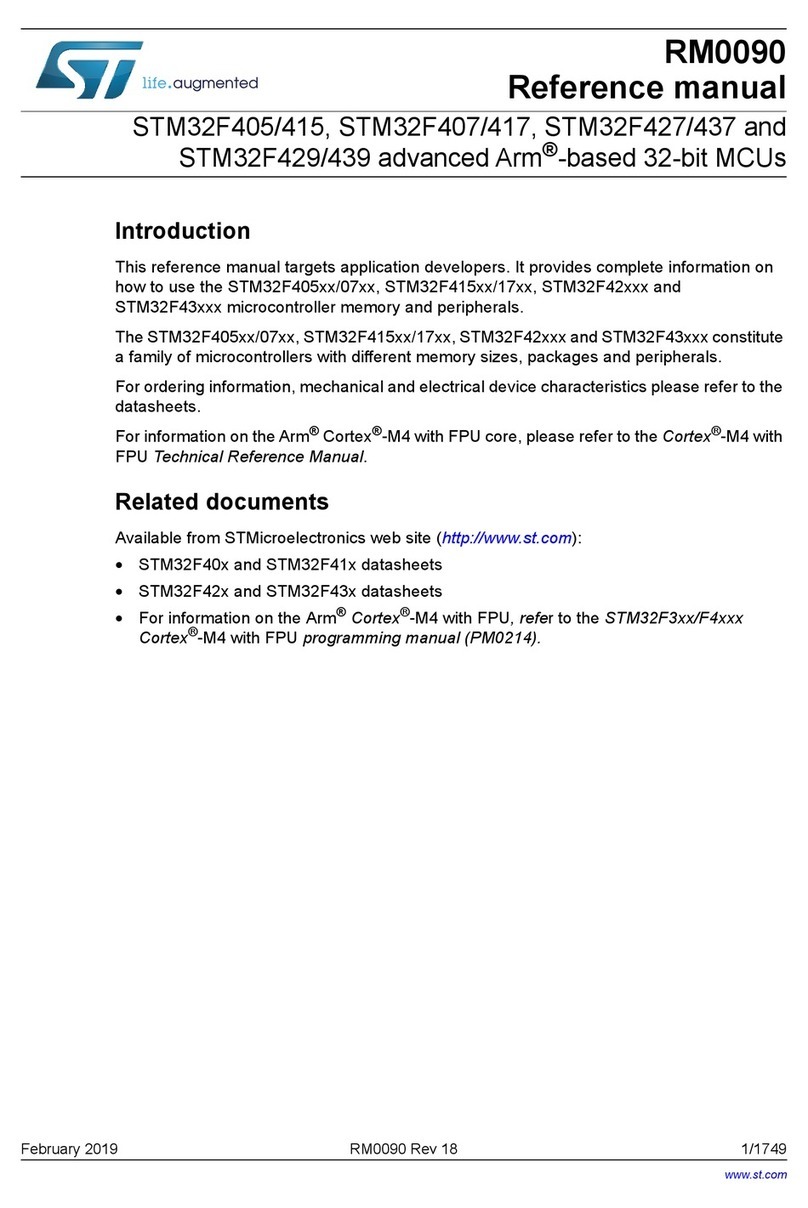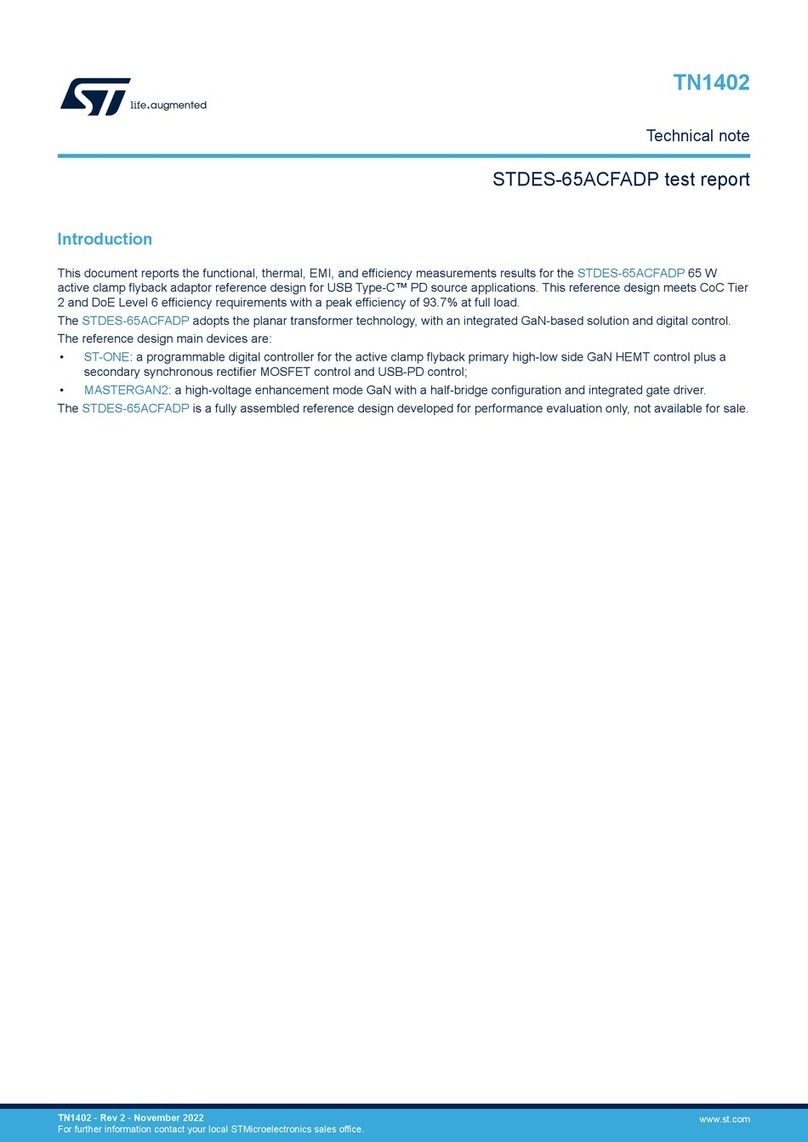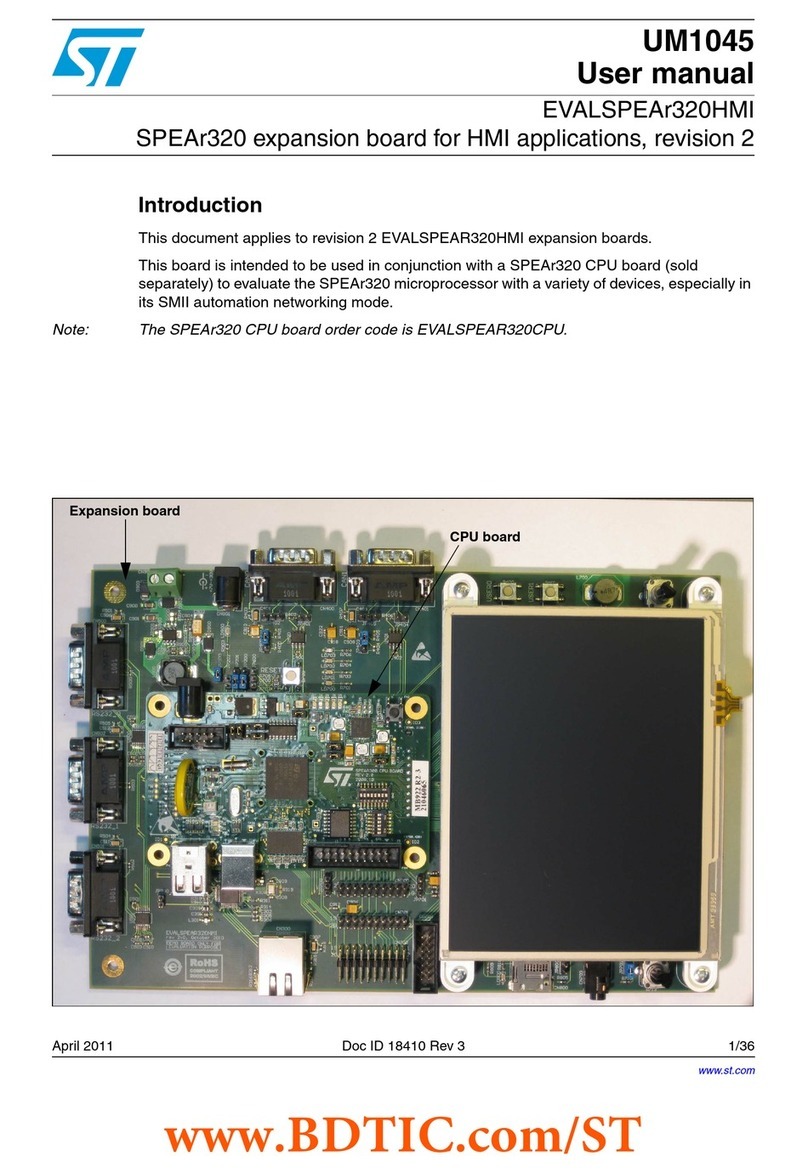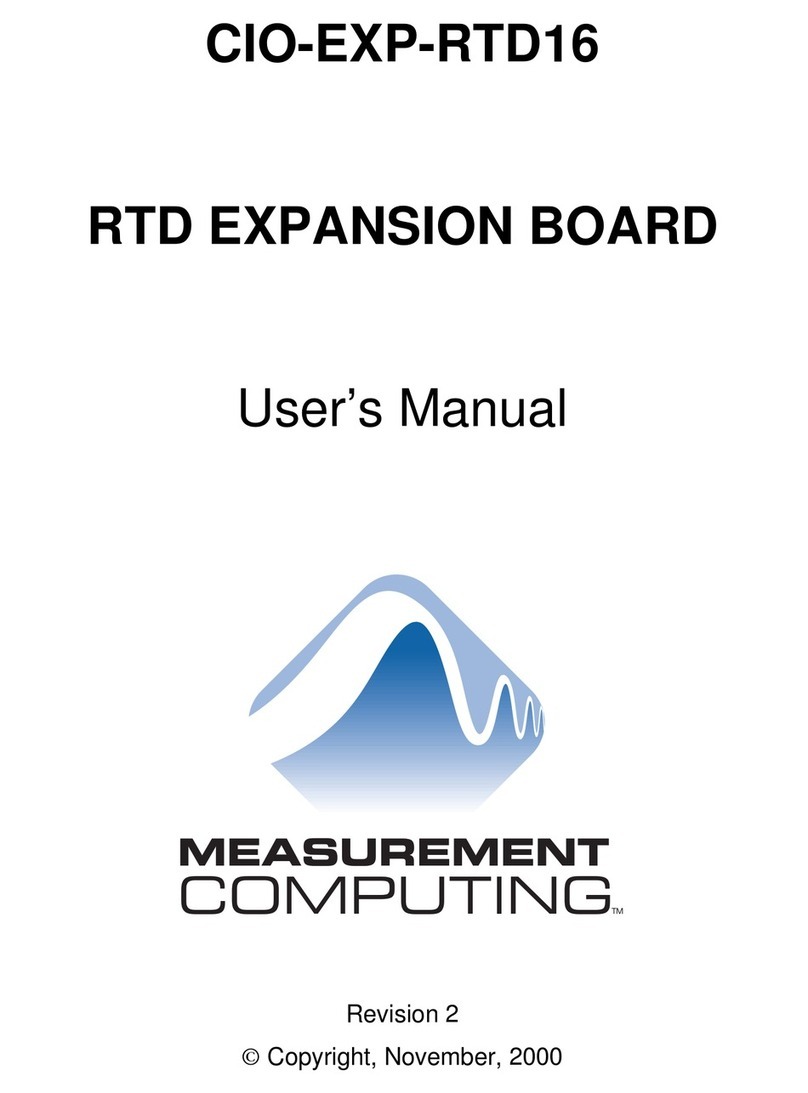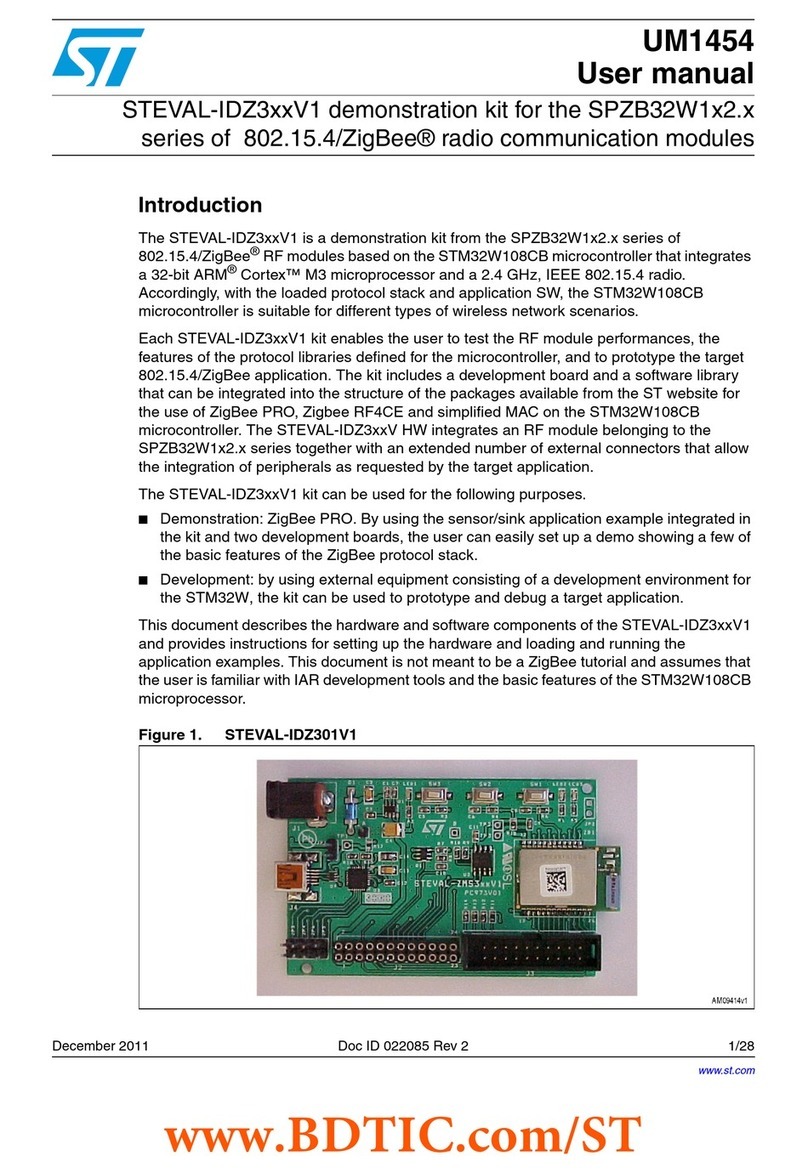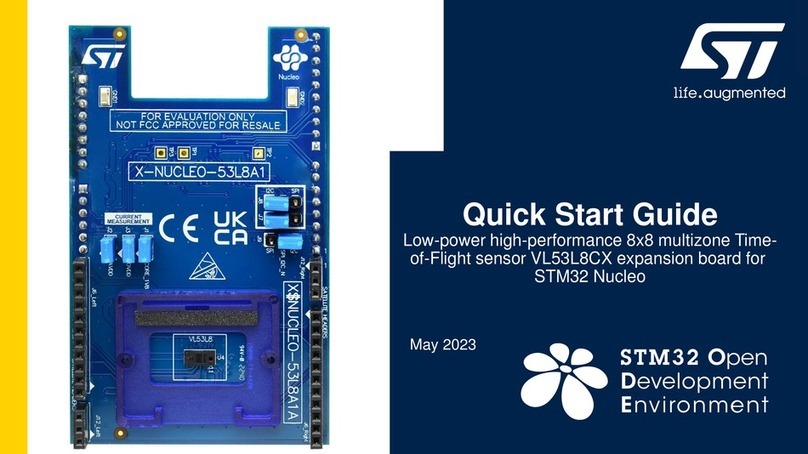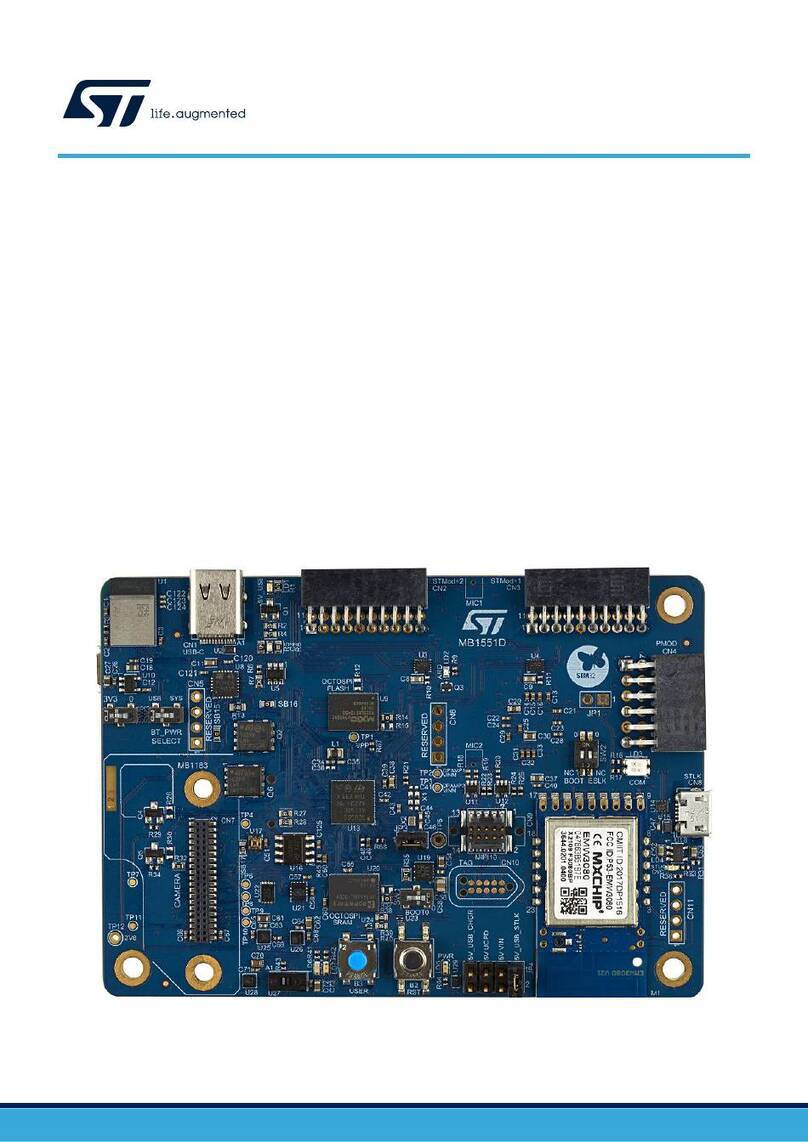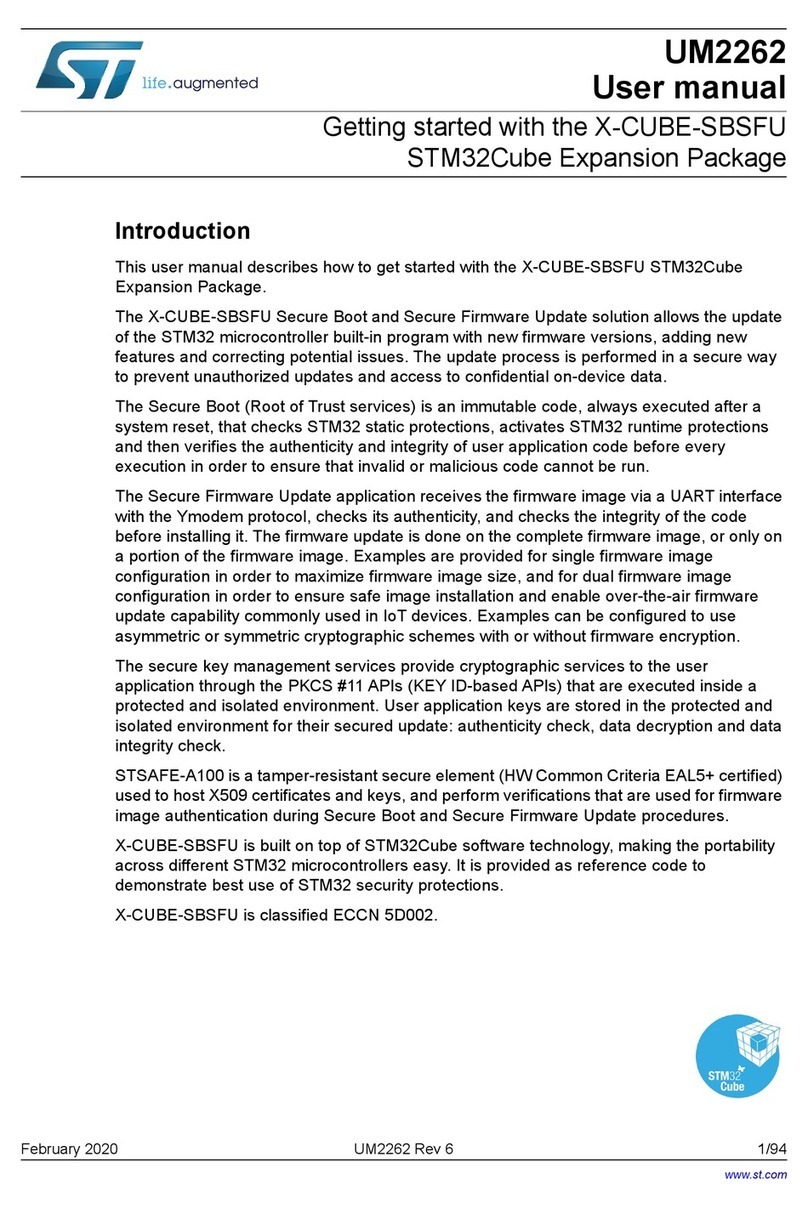
Description M41ST85W
6/43 Doc ID 7531 Rev 11
1 Description
The M41ST85W is a combination serial real-time clock, microprocessor supervisor, and
NVRAM supervisor. It is built in a low-power CMOS SRAM process and has a 64-byte
memory space with 44 bytes of NVRAM and 20 memory-mapped RTC registers (see
Table 2 on page 20). The RTC registers are configured in binary coded decimal (BCD)
format.
The M41ST85W combines a 400 kHz I2C serial RTC with an automatic backup battery
switchover circuit for powering an external LPSRAM as well as the internal RTC. When
power begins to fail, the switchover automatically connects to the backup battery to keep the
RTC and external LPSRAM alive in the absence of system power. Access to the LPSRAM is
also cut off via a chip-enable gate function, thereby write-protecting the memory. A
programmable watchdog and power-on reset/low voltage detect function are the key
elements in the microprocessor supervisor section.
The real-time clock includes a built-in 32.768 kHz oscillator (crystal-controlled), which
provides the time base for the timekeeping and calendar functions. Eight of the 20 clock
registers provide the basic clock/calendar functions while the other 12 bytes provide
status/control for the alarm, watchdog, and squarewave functions.
RTC addresses and data are transferred serially via the two-line, bidirectional I2C interface.
The built-in address register is incremented automatically after each WRITE or READ data
byte.
The M41ST85W has a built-in power sense circuit which detects power failures and
automatically switches to the backup battery when a power failure occurs. During an outage,
the power to sustain the SRAM and clock operations is typically supplied by a small lithium
button-cell battery as is the case when using the SNAPHAT®package option.
Functions available to the user include a non-volatile, time-of-day clock/calendar, alarm
interrupts, watchdog timer, and programmable squarewave generator. Other features
include a power-on reset as well as two additional debounce reset inputs (RSTIN1 and
RSTIN2) which can also generate an output reset (RST).
The eight registers for basic clock/calendar functions contain the century, year, month, date,
day, hour, minute, second, and tenths/hundredths of a second in 24-hour BCD format.
Corrections for 28, 29 (leap year - valid until year 2100), 30 and 31 day months are made
automatically.
The M41ST85W is offered in two 28-lead SOIC packages. The 300 mil SOH28 SNAPHAT®
IC package mates with ST’s SNAPHAT battery/crystal top (ordered separately). SNAPHAT
battery options include 48 mAh and 120 mAh. ST’s 300 mil SOX28 embedded crystal IC
includes the 32 KHz crystal and is perfect for applications where a low profile is a must.
The SOH28 SNAPHAT SOIC includes sockets with gold plated contacts at both ends for
direct connection to the SNAPHAT top. The SNAPHAT battery/crystal top is inserted atop
the IC package after the completion of the surface mount assembly process which avoids
potential battery and crystal damage due to the high temperatures required for device
surface-mounting. The unique design allows the battery to be replaced, thus extending the
life of the RTC and NVRAM indefinitely.
The SNAPHAT top is keyed to prevent reverse insertion. The SNAPHAT IC and SNAPHAT
tops are shipped separately. The ICs are available in plastic anti-static tubes or in tape &
reel form. The SNAPHAT tops are shipped in plastic anti-static tubes. The part numbers are
